Jazz up the joint with a basement speak-easy
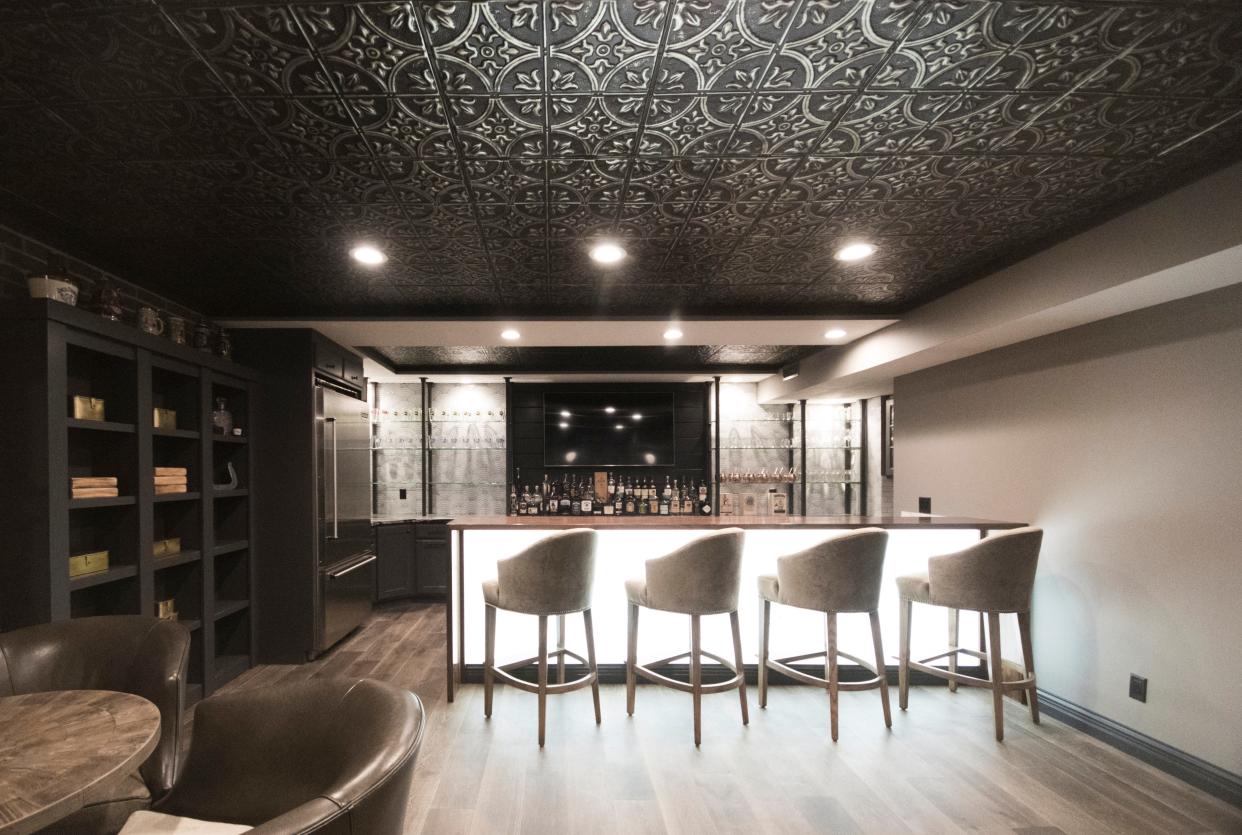
Speak-easies evolved in the 1920s after the 18th Amendment made it illegal to manufacture, sell, transport or consume “intoxicating liquors.” The law went into effect in 1920 and was repealed in 1933. That 13-year period is known as Prohibition.
Speak-easies became secret gathering spots that served liquor, often in basements or back-alley locations. Many were poorly lit, grim settings that did not draw attention. Clientele would “speak easy” about their outings for obvious reasons.
That raucous period in American history holds such nostalgia for some people that they want to re-create it in their homes to treat family and guests to an underground good time.
'Transcended in time'
Interior designer Laura Yeager Smith was delighted when a client asked for a speak-easy in the 1,500-square-foot basement remodel of their 1990s-era home in Hudson, Ohio.
“A speak-easy is all about being transcended in time,” she says. “It needs to have a moody, masculine vibe with a touch of industrial edge.”
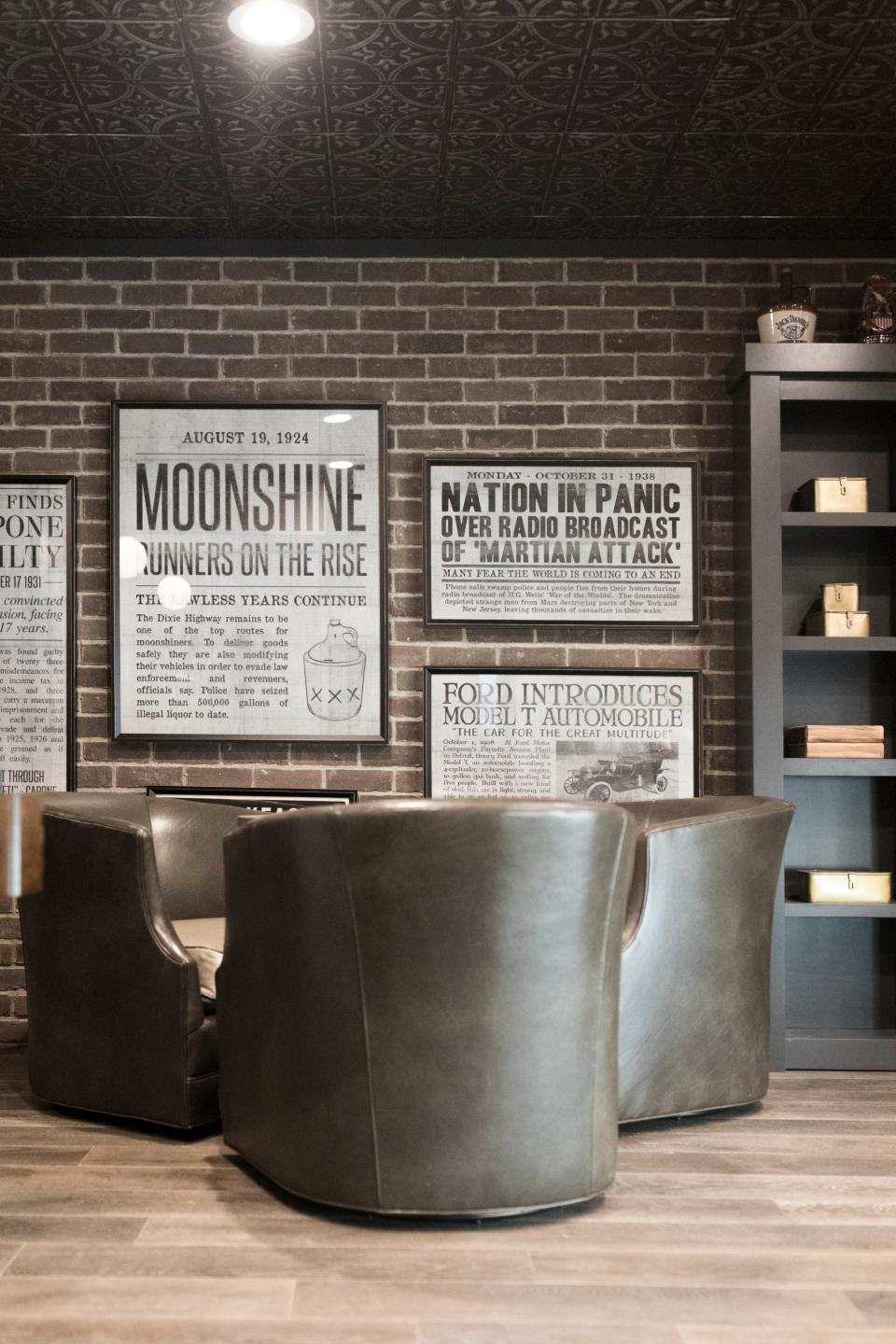
The home Smith worked on has two staircases to the basement, including one from the garage (a secret passageway, if you will). Smith began by applying thin brick and industrial exterior sconces to the stairway walls to create a back-alley setting.
A bookshelf conceals a secret door to an unfinished storage area. Another door includes a sliding peephole, a telltale speak-easy element.
More thin brick on accent walls, charcoal gray woodwork and hammered tin ceilings carry the vibe throughout.
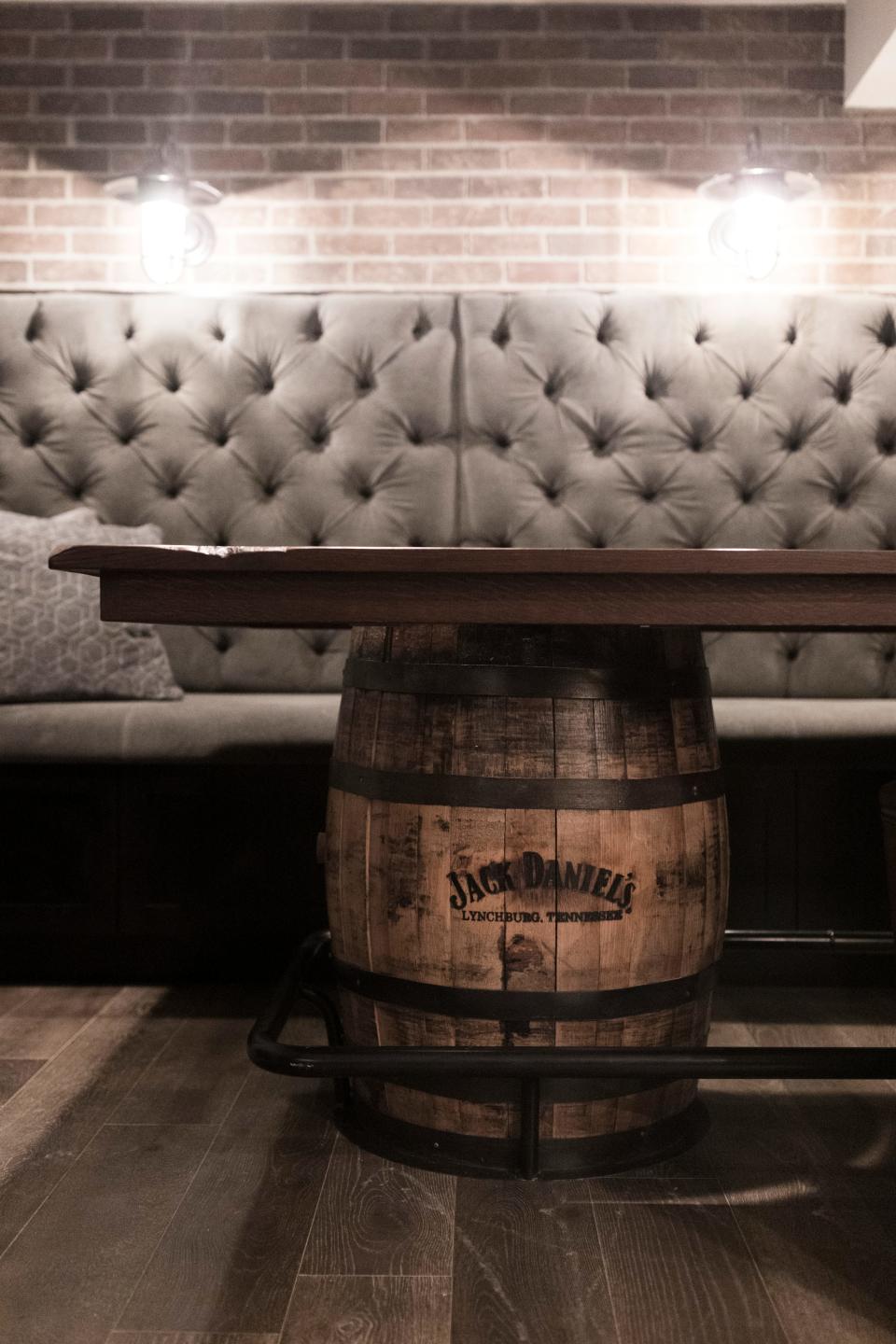
Using rough-sawn wood, Smith designed a rounded ceiling over one seating area with a banquette table supported by whiskey barrels.
A vintage family heirloom phonograph, a few moonshine jugs on the onyx bar and reproduction newspaper posters with headlines about Al Capone’s trial complete the look.
A re-enactment redesign
When Amy and Bruce Eckert began discussing ideas for the basement remodel in their American Tudor home in Holland, Mich., they never considered a speak-easy. The house was built in 1927, and the couple was committed to keeping any renovations as true to the period as possible.
“When we redid the bathrooms and kitchen, I could find all sorts of ideas, but search ‘basements in the 1920s’ and you get nothing,” Amy says.
A conversation with an acquaintance sparked the idea of a speak-easy.
The primary problem with any renovation to a 95-year-old home is that it’s 95 years old. Nothing is square.
Nothing is even. The contractor spent weeks repairing a leak in the sublevel basement window and creating a separate window out of an old coal chute. Subcontractors replaced wiring, plumbing and the heating and air conditioning system. They poured about 18 bags of floor leveler to make the concrete suitable for the faux-wood tile the Eckerts chose.
“We are fortunate that much of the cabinetry and flooring upstairs is original and we were able to match the hardware and tile almost perfectly,” Amy says. Beveled wood and hammered steel latches in the speak-easy match the built-in cabinets of the dining and living areas on the main floor.
Supply chain issues delayed the planned November 2021 completion date so the project remains ongoing.
Mixing the old with the new
Bruce’s father had worked as a radio repairman and, as a result, a 1920s-era radio will be part of the décor. The radio was rewired as a part of the sound system and is the focal point of the custom-built cabinetry stained a dark walnut.
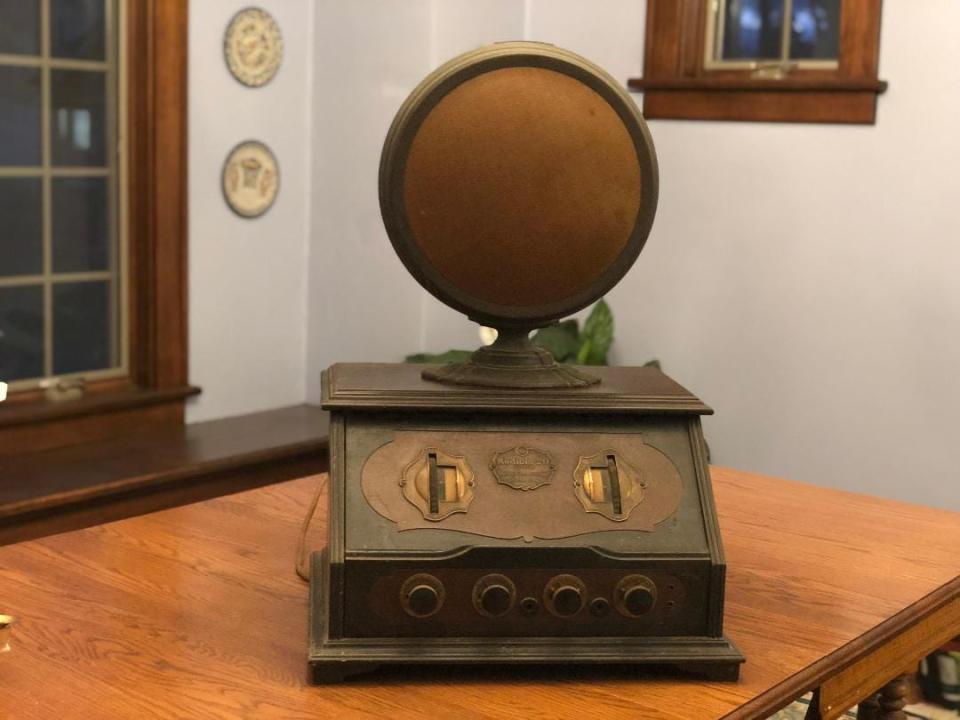
Exposed brick from the upstairs fireplace contributes to the rugged basement vibe, along with wainscoting on the bar lit by Tiffany pendants in gem tones. Scotch bottles that are Amy’s father’s favorites have a prominent spot on the bar.
Other décor items include a 300-bottle wine closet, a deep brown leather couch and matching chair, a garnet Persian rug and a high-top table. Walls are painted goldenrod.
Despite the emphasis on period accuracy, there’s an LED TV, radiant heat and wiring for eventual solar power.
“When you work on an old home, there’s always a dichotomy of trying to balance the old character with the comforts of a modern lifestyle,” Amy says.
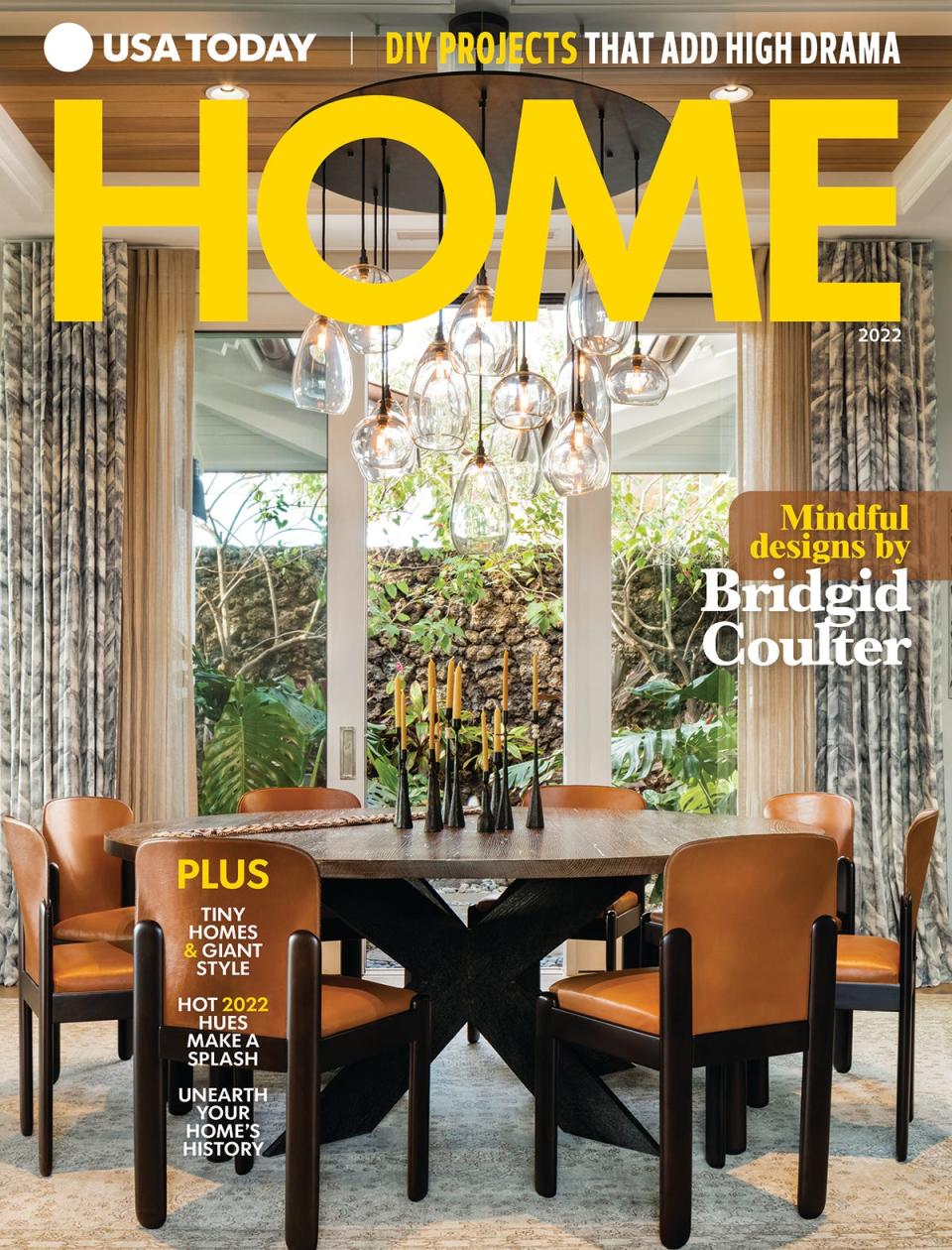
This article originally appeared on USA TODAY: Basement speak-easies give Prohibition vibes

